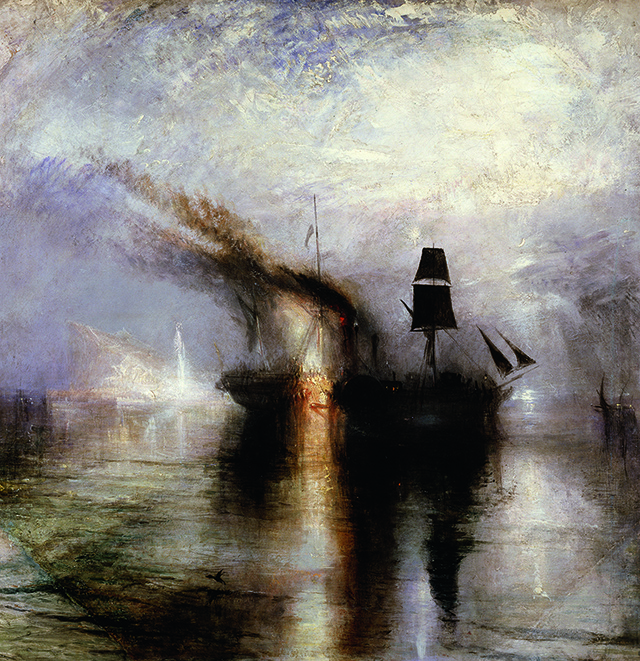My favourite painting: Bob and Roberta Smith
Bob and Roberta Smith chooses his a J.M.W. Turner picture as his favourite painting


Peace—Burial at Sea, 1842, by J. M. W. Turner (1775–1851), 34.in by 341⁄8in, Turner Bequest, Tate Britain
Bob and Roberta Smith says: 'My father, Fred Brill, was a landscape painter and, in 1967, he was asked to write a book for Paul Hamlyn about his favourite painting. I have inherited his love for Peace —Burial at Sea.
'It’s a bleak image of death and loss, but also of sublime beauty. Turner’s great paintings of light, wherever he may have historically located them— Venice, Elba, Jamaica—were influenced by the atmospheric conditions at Margate. He painted sunsets over the Thames estuary again and again, always giving the appearance of the sun setting over water, even though Margate is on the east coast. It’s a remarkable sight.'
Bob and Roberta Smith RA is an artist. He has two current exhibitions: ‘Art bis Your Human Right’ at the William Morris Gallery (until January 31) and ‘Art for All’ at the Yorkshire Sculpture Park (until January 3)
John McEwen comments on Peace – Burial at Sea
Turner attached some lines from his poem Fallacies of Hope to the title: ‘The midnight torch gleamed o’er the steamer’s side/And Merit’s corse was yielded to the tide.’ He first used a quotation from the poem to accompany a title in 1812 and did so frequently thereafter, so much so that Punch mocked him when he exhibited a picture without one, writing that since he was ‘too modest to quote from Fallacies of Hope we will quote it for him’. Turner often wrote snatches of his own verse in sketchbooks, but Fallacies of Hope has never been found, which suggests that, as a single poem, it may never have existed.
This would typify his secretive behaviour. The picture is a memorial to the Scottish painter Sir David Wilkie, who died off Gibraltar on June 1, 1841; his corpse was buried at sea the same evening. Turner suggested a commemoration to his fellow academician and future loyal executor, George Jones. Jones drew the burial moment on deck from an eye-witness account. Turner painted ‘as it must have appeared off the coast’. The unusual octagonal framing may have derived from two examples by his favourite artistic forebear, Claude Lorrain.
Exquisite houses, the beauty of Nature, and how to get the most from your life, straight to your inbox.
The painting was not well received. Jones reported that the marine painter Clarkson Stanfield RA objected to the black sails. ‘I only wish I had any colour to make them blacker,’ Turner said, his use of black possibly a tribute to Wilkie’s preference for the colour in his later pictures. Even his young champion John Ruskin disapproved of ‘the unnatural blackness of the sails’.
